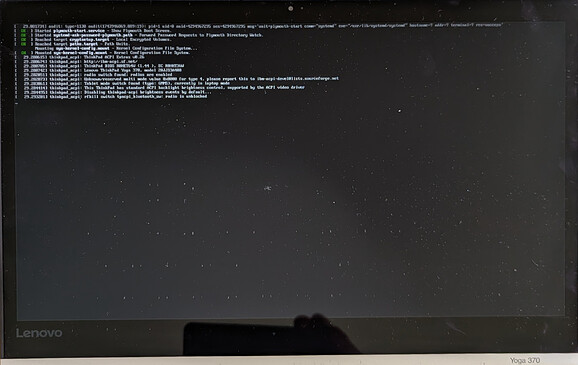Tobias Killer seems more knowledgeable than myself. Still, I have had some trials trying to install Qubes to different computers in the past, and I am, a person who just tries things.
Things I read on the Qubes Forum of folks who have problems, newcomers sometimes try to install Qubes before verifying the BIOS/EFI on their target computer has the Virtualization turned on.
I am surprised to read that DD could have a failure. I don’t use dd myself. I am apprehensive about using dd when I write to a USB on a computer that has several drives, as I might get confused and write over something I really did not intend to.
So I use the tools in Mint Linux for USB. If Mint is running, on all the programs, type in USB. Natively Mint has a USB formatting program, which I use to write FAT32 format to the USB stick. I want it pristine. Then I use the USB image writer tool to write Qubes to the freshly formatted USB drive. I guess if I really carry out my fantasies of really top notch security. I would use a newly broken open package of a USB key, which I bought from a random store at least a hundred miles from where I live. and use dd to write the Qubes install. (from a freshly installed Linux computer)
I am guessing you are using the latest stable version of Qubes, with the latest kernel, (select-able at the beginning of install)??
Some folks have had issues with graphics chips or graphics cards needing a setting, to be made a the beginning of the Qubes install.
I have some computers which will not allow for two internal drives to be used at the same time, and some which don’t seem to care, I can have Qubes on one drive, and almost anything else on the other drive. Librem 13v2 has both the original drive, and a later added M2. Qubes requires one of the drives to be formatted and not used. the original drive is simply formatted, empty, and unused. Probably some means to use both, but I don’t bother.
I also have had problems trying to install some of the earlier versions of Qubes on a drive, which had another operating system already on it. So I have used some Live Linux USB to overwrite the entire SATA drive with FAT32, and because of my fantasies of Security, have overwritten all the target drive with ones. I choose FAT32 to start the install to make sure the Qubes installer will write its own boot sector.
This is not like a hard and fast rules to install Qubes, it is like my recipe. and some of this may be a waste of time for you to try.
Please state all the exact specifications of your laptop. Not just processor, but RAM, BIOS/EFI, graphics information. Well, that is for folks more knowledgeable than myself.
I thought I would jump in as a Sunday is the day a lot of folks have time to fiddle with computers. Even though we have some more knowledgeable folks on Qubes and Qubes install to your exact computer. later today.
There is some re-writing documentation, although the documentation on this now is not wrong.
It would be easier for others to give answers if you joined the Qubes Forum.
I tip my hat to Tobias Killer, and OP. I am off to waste money at the store.
